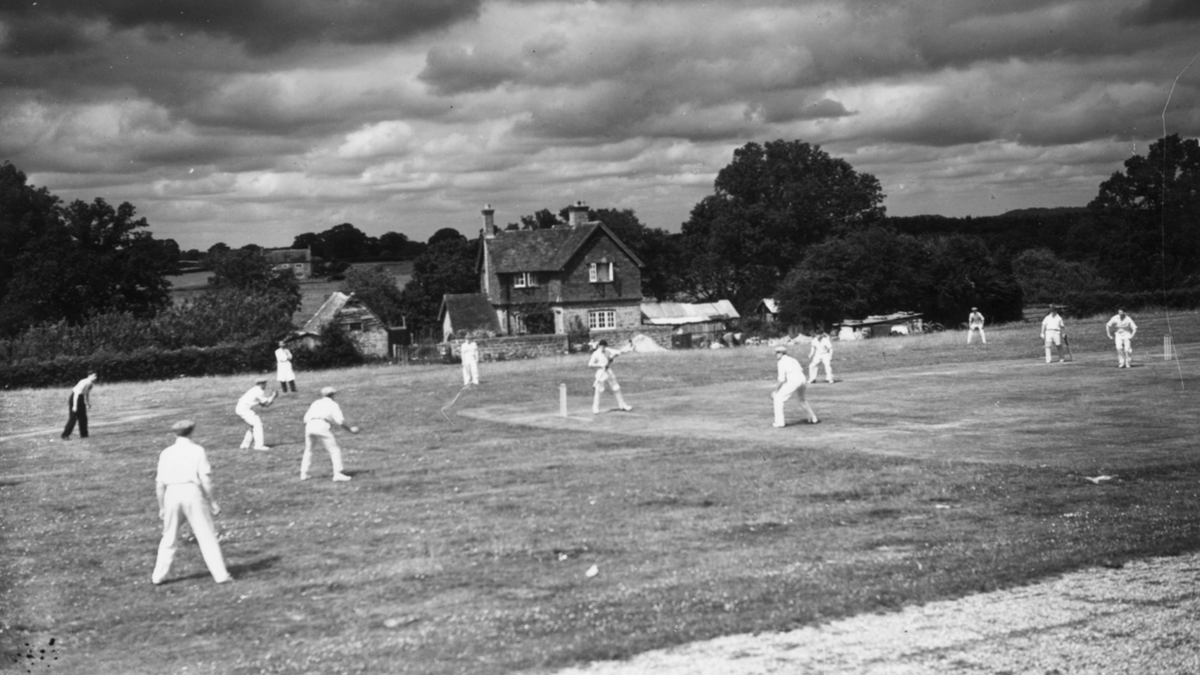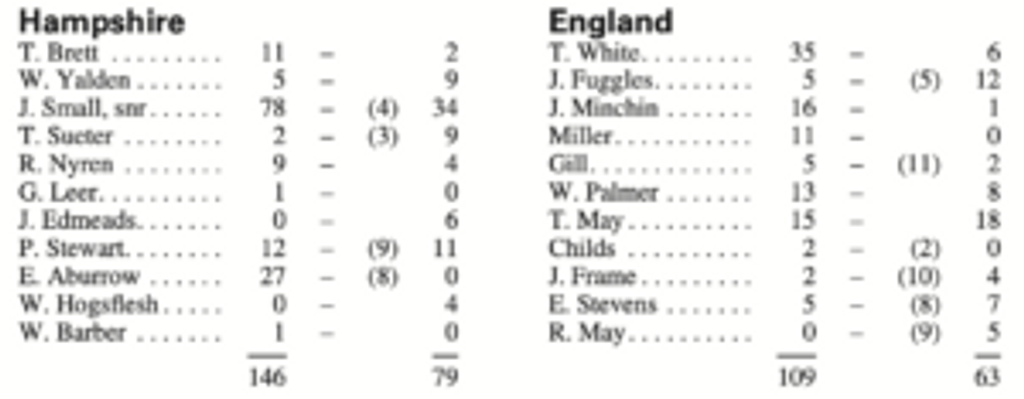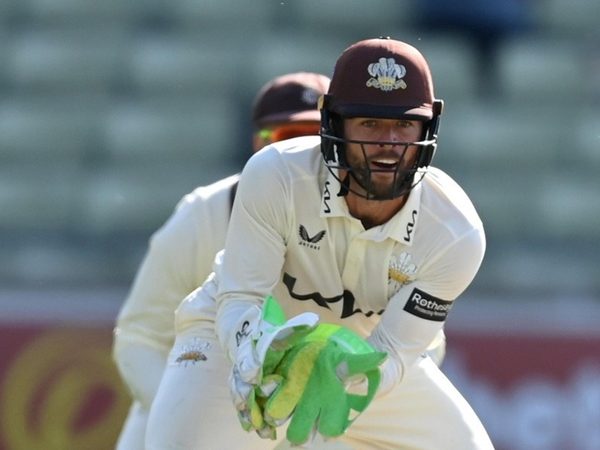
For the 2022 Wisden Cricketers’ Almanack, Kit Harris takes a look back to the 18th century and the birth of first-class cricket.
This year marks the 250th anniversary of the oldest game deemed first-class by the Association of Cricket Statisticians and Historians, between Hampshire and England at Broadhalfpenny Down, Hambledon, on June 24 and 25, 1772. The England team comprised players from Kent and Surrey; Hampshire recruited two Surrey players, William Yalden and John Edmeads. The Salisbury and Winchester Journal considered Minchin the “best batsman in the world”, but he was substantially outscored by Hampshire’s John Small, “to the surprise of all present”. Hampshire won by 53 runs.

Notes on the teams
Hampshire: John Nyren, 12 years old on the day of this match, described Tom Brett in The Cricketers of My Time as “the fastest and straitest bowler that ever was known”. William Yalden was one of the earliest genuine wicketkeeper-batsmen; the following year, on the same ground, he surpassed John Small’s 78, with 88 for Surrey against Hampshire. Nyren credited Small as the pioneer of the quick single, and carpenter Tom Sueter as one of the first “who departed from the custom of the old players, who deemed it a heresy to leave the crease for the ball”. The captain was Dick Nyren (John’s father), who with Brett did the bulk of the bowling. “Little” George Leer’s principal role was specialist long stop. John Edmeads, a farmer, was reckoned a superb fielder; Peter “Buck” Stewart, an innkeeper, was the prankster of the team. Edward “Curry” Aburrow was the son of a smuggler, and had a strong throw. The first-change bowler was William Hogsflesh, whose “high delivery” action was as high as the underarm law of the day would allow. William Barber, a cobbler, later took over from Dick Nyren as innkeeper of the Bat and Ball at Hambledon.
England: Two of their five Surrey men were catalysts for change. Opener Thomas “Daddy” White had, the previous year, batted for Chertsey against Hambledon with a bat as wide as the wicket. The bowler, Brett, objected – and the bat’s width was limited to 41/4 inches in 1774. Edward “Lumpy” Stevens, meanwhile, was bowling against Hambledon at Chertsey in 1775, when a delivery passed through Small’s two-stump wicket; Stevens’s protests led to the introduction of a middle stump. John Frame was a remarkable bowler: short, fat and fast. William Palmer was a good batsman from Coulsdon; details of Childs, another batsman, are scant. Kent’s John Minchin, an employee of the Duke of Dorset, had an agricultural style, and in 1769 had struck the earliest known century: 107 for the Duke’s XI against Wrotham. In 1773, he became the first recorded as out hit wicket. Miller is almost certainly Joseph (the Nyren book describes him and Minchin as “the only two batsmen the Hambledon men were afraid of”). Arthur Haygarth wrote of the brothers Tom and Richard May: “Tom was for batting, Dick for bowling famed.” Not much is known of James Fuggles, except he was a noted batsman. The wicketkeeper, Gill, was probably a Buckinghamshire man who occasionally played in Dartford.








